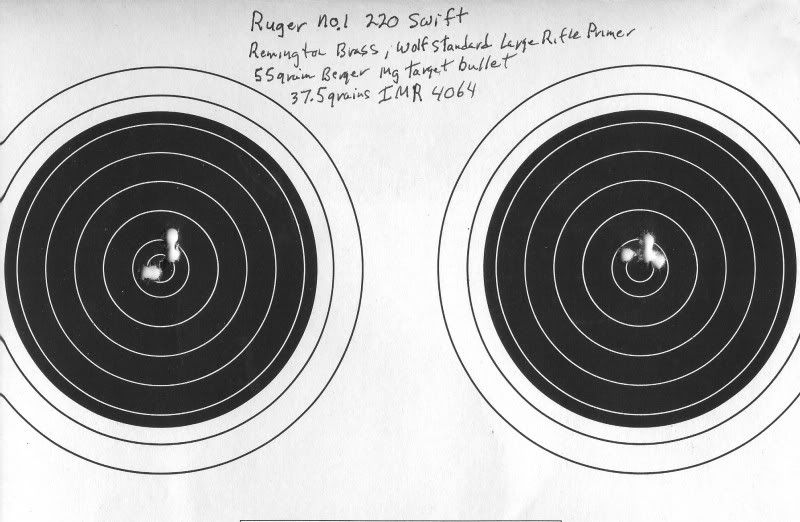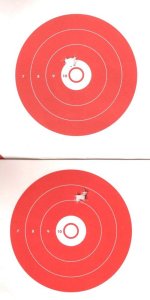One thing that has started to bother me is the rising cost of target quality rimfire ammunition. With 17HMR running around $15 a box and target quality 22 LR ammunition costing $7-$15 a box, a lot of the cost differential between rimfire and centerfire is disappearing, for the serious target shooter.
One advantage of centerfire is the possibility of reducing cost and tayloring the ammunition to your rifle by hand loading your own ammunition. Hand loading also becomes another project that comes in handy when the snow flies or the rain just won't quit.
At $15 a box, the ammunition for my 17hmr rifle costs 30 cents a round and I have to accept whatever the manufacturers offer. By handloading for my Ruger No. 1 .220 Swift I can create ammunition far better suited to my rifle than any commercial ammuntiion at about 35-40 cents a round.
I have been load testing with different bullets and powder for quite some time and had just about decided the rifle was not capable of better than about 1" five shot group accuracy until I achieved two rather satisfying groups yesterday. The target below was shot at 100 yards. It showed me that the rifle is capable of a five shot CTC group of around 1/3". The two groups measure center to center 0.506" and 0.374".
As I am still testing loads and improving my shooting skills, I now assume the rifle is probably capable of 0.250" or better. I am pleased to shoot that at 50 yards with any of my rimfire rifles.
While I will not give up on rimfire rifles, I sure am bummed by the lack of inexpensive 17HMR and the rising cost of .22 LR, with the need to accept whatever loads the manufacturers are willing to sell us.

One advantage of centerfire is the possibility of reducing cost and tayloring the ammunition to your rifle by hand loading your own ammunition. Hand loading also becomes another project that comes in handy when the snow flies or the rain just won't quit.
At $15 a box, the ammunition for my 17hmr rifle costs 30 cents a round and I have to accept whatever the manufacturers offer. By handloading for my Ruger No. 1 .220 Swift I can create ammunition far better suited to my rifle than any commercial ammuntiion at about 35-40 cents a round.
I have been load testing with different bullets and powder for quite some time and had just about decided the rifle was not capable of better than about 1" five shot group accuracy until I achieved two rather satisfying groups yesterday. The target below was shot at 100 yards. It showed me that the rifle is capable of a five shot CTC group of around 1/3". The two groups measure center to center 0.506" and 0.374".
As I am still testing loads and improving my shooting skills, I now assume the rifle is probably capable of 0.250" or better. I am pleased to shoot that at 50 yards with any of my rimfire rifles.
While I will not give up on rimfire rifles, I sure am bummed by the lack of inexpensive 17HMR and the rising cost of .22 LR, with the need to accept whatever loads the manufacturers are willing to sell us.




